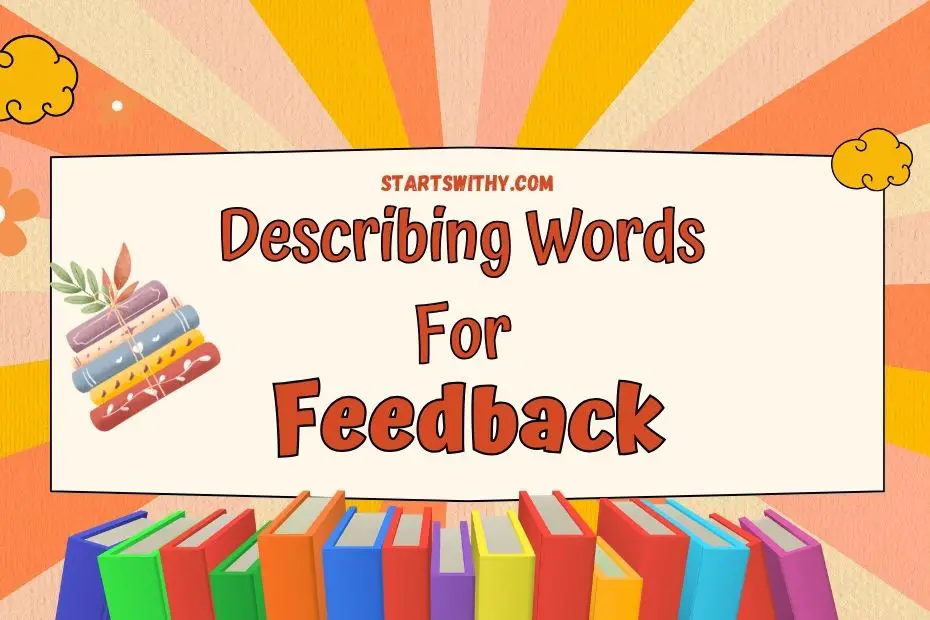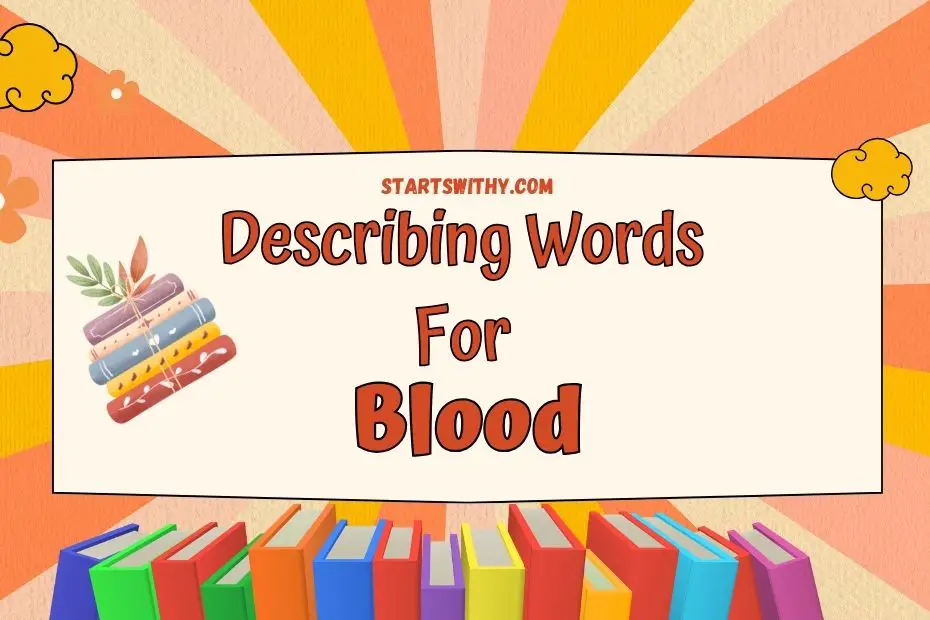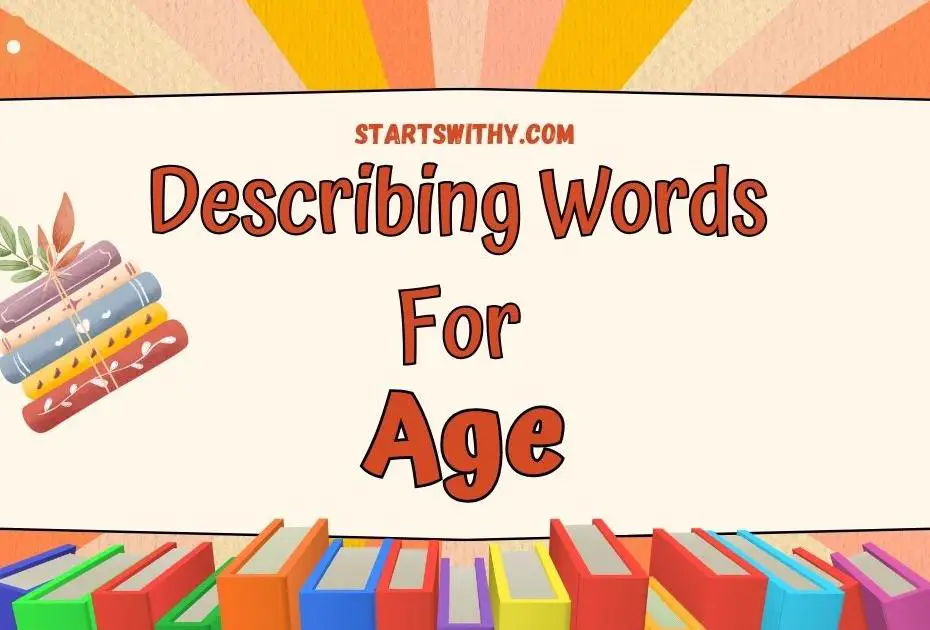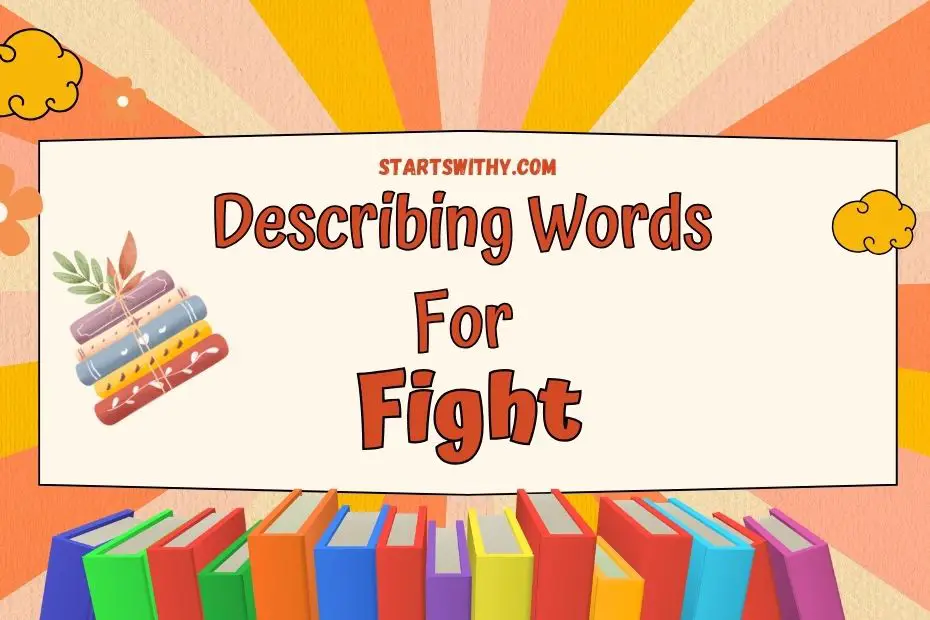Are you tired of giving and receiving generic feedback? Want to spice up your communication with descriptive and impactful words? Look no further! In this article, I’ll be sharing a variety of adjectives that you can use to enhance your feedback. Whether you’re a manager providing performance evaluations or a teacher grading assignments, these adjectives will help you provide specific and constructive feedback that will truly resonate with the recipient.
Feedback is an essential part of personal and professional growth, but it can often feel impersonal or vague. By incorporating descriptive adjectives into your feedback, you can make it more meaningful and memorable. From positive attributes like “innovative” and “dedicated” to areas for improvement such as “careless” or “inconsistent,” these adjectives will help you paint a vivid picture of someone’s performance. Plus, I’ll provide real-life examples to demonstrate how these adjectives can be used effectively in different contexts.
How to Describe feedback? – Different Scenarios
When it comes to describing feedback, it’s important to consider the specific scenario and tailor your adjectives accordingly. Here are some examples of how to describe feedback in different situations:
1. Classroom setting:
In a classroom setting, providing feedback to students is crucial for their growth and development. By using descriptive adjectives, you can effectively communicate their strengths and areas for improvement. For instance:
- Positive feedback: “Great job, Emily! I’m impressed with your creative thinking and excellent problem-solving skills.”
- Constructive feedback: “John, you’ve made significant progress, but let’s work on being more organized and attentive during class.”
2. Performance review:
When conducting performance reviews, using descriptive adjectives can help provide a comprehensive assessment of an employee’s performance. Here are some examples:
- Positive feedback: “Sarah consistently demonstrates a high level of professionalism and is a valuable team player.”
- Constructive feedback: “David, your work is generally good, but I’ve noticed some areas where you could improve your attention to detail and time management.”
3. Peer feedback:
In a peer feedback situation, descriptive adjectives can make your comments more impactful and memorable. Consider these examples:
- Positive feedback: “Jason, your presentation was engaging and insightful. You really captured the audience’s attention.”
- Constructive feedback: “Rachel, I noticed that you were a little unclear in your explanation. Perhaps you could provide more specific examples next time.”
4. Creative writing feedback:
When giving feedback on creative writing, descriptive adjectives can help convey your thoughts effectively. Here are a few examples:
- Positive feedback: “Amy, your story is captivating and filled with vivid descriptions. It truly transports the reader.”
- Constructive feedback: “Michael, your writing shows promise, but let’s work on improving the flow and structure of your sentences.”
Remember, using descriptive adjectives in feedback is not only informative but also encourages growth and improvement. By providing specific examples and thoughtful feedback, we can motivate and inspire others to excel.
Describing Words for feedback in English
As a seasoned educator, I understand the importance of using descriptive adjectives in feedback to make it more impactful and memorable. When it comes to providing feedback, choosing the right words can greatly influence how it is received and understood by the recipient.
In the field of education, descriptive adjectives play a crucial role in giving feedback to young learners. Not only do these words inform students about their progress, but they also inspire growth and improvement. So, let’s explore some examples of describing words that can be used in feedback for children:
Positive Adjectives:
- Bright: “Your smile is so bright, it made my day!”
- Curious: “I love your curiosity! What questions do you have?”
- Creative: “Your drawing is so creative, I love the colors you used.”
- Energetic: “You have so much energy, it’s contagious!”
- Friendly: “You’re such a friendly friend, everyone loves playing with you.”
- Helpful: “Thank you for being so helpful, it made things so much easier.”
- Honest: “I appreciate your honesty, it’s important to be truthful.”
- Imaginative: “Your story was so imaginative, it took me on an adventure!”
- Independent: “You’re so independent, I’m proud of you for trying things on your own.”
- Kind: “You’re so kind to others, it makes everyone feel good.”
Constructive Adjectives:
- Challenging: “This problem might be a bit challenging, but I know you can do it with some effort.”
- Confusing: “It seems like you might be a little confused, let’s break it down together.”
- Frustrating: “I understand you’re frustrated, but let’s try a different approach.”
- Impatient: “It’s okay to take your time, rushing won’t help you learn.”
- Inconsistent: “You seem to be struggling with this sometimes, let’s practice more.”
- Loud: “Please try to use a quieter voice, we need to be respectful of others.”
- Rough: “Be gentle with your toys, they’re delicate.”
- Scattered: “Let’s try organizing your work so it’s easier to understand.”
- Selfish: “Remember to share and be considerate of others’ feelings.”
- Unfocused: “It seems you’re distracted, let’s try to focus on one thing at a time.”
Encouraging Adjectives:
- Almost: “You’re almost there, keep trying and you’ll get it!”
- Better: “That’s much better! I can see you’re improving.”
- Easier: “This time it will be easier because you practiced before.”
- Excellent: “Wow, that’s excellent work! I’m so proud of you.”
- Fantastic: “That’s fantastic! You did a great job!”
- Impressive: “I’m impressed by your effort and dedication.”
- Nearly: “You’re nearly finished, don’t give up!”
- Remarkable: “That’s remarkable! You have a real talent for this.”
- Super: “Super job! You did a super job today.”
- Terrific: “Terrific effort, you should be proud of yourself!”
Specific Adjectives:
- Attentive: “You were very attentive during story time today.”
- Careful: “I love how careful you are with your artwork.”
- Cooperative: “You cooperated so well with your group today.”
- Creative: “You used such creative colors in your painting.”
- Determined: “I admire your determination to keep trying.”
- Empathetic: “It’s kind of you to be empathetic towards your friend.”
- Helpful: “You were so helpful when I needed you today.”
- Honest: “I appreciate you being honest about your feelings.”
- Imaginative: “You have such a wild imagination, I love it!”
- Independent: “You’re so independent, you can do this all by yourself!”
Incorporating these descriptive adjectives into your feedback can help young learners feel motivated and valued. By providing specific and encouraging words, you create an environment that fosters growth and allows students to reflect on their achievements.
Remember, the goal of feedback is to provide guidance and support, so choosing the right adjectives is crucial. Let’s continue to use these powerful describing words to inspire and empower our students in their learning journey.
As an educator, I have witnessed the positive impact that descriptive adjectives can have on students. So, let’s make our feedback more effective and meaningful by incorporating these words into our teaching practices. Together, we can create a nurturing environment that promotes growth and development for all learners.
Adjectives for feedback
As an experienced educator, I understand the importance of using descriptive adjectives in feedback to make it impactful and memorable for students. Whether you’re a preschool or kindergarten teacher, incorporating descriptive adjectives into your feedback can greatly enhance the learning experience. In this section, I will provide you with a list of positive and negative adjectives that you can use in your feedback, along with example sentences to demonstrate their usage.
Positive Adjectives for Feedback
When providing positive feedback to young learners, it’s essential to use adjectives that acknowledge their efforts, celebrate their achievements, and encourage further growth. Here are twelve examples of positive adjectives that you can incorporate into your feedback:
| Adjective | Example Sentence |
|---|---|
| Creative | “I love how you used different colors in your artwork!” |
| Curious | “You have asked some great questions during our science experiment.” |
| Kind | “Thank you for helping your classmates during group work.” |
| Brave | “You showed courage when presenting in front of the class.” |
| Imaginative | “Your story had such vivid and imaginative details.” |
| Responsible | “I can always count on you to complete your tasks on time.” |
| Patient | “I appreciate your patience when waiting for your turn.” |
| Helpful | “You offered great assistance to your classmates during the activity.” |
| Respectful | “You have shown respect towards your peers’ ideas.” |
| Persistent | “Your determination to solve the math problem is impressive.” |
| Confident | “I’m impressed by the confidence you showed during your presentation.” |
| Organized | “Your neat and organized project is exceptional.” |
Negative Adjectives for Feedback
While it’s important to provide constructive criticism when necessary, it’s equally crucial to do so in a respectful and considerate manner. Here are five examples of negative adjectives that you can use when providing feedback to young learners:
| Adjective | Example Sentence |
|---|---|
| Disorganized | “Let’s work on organizing your materials to stay more focused.” |
| Careless | “Next time, pay more attention to avoid making careless mistakes.” |
| Impatient | “Remember to be patient and wait for your turn to speak.” |
| Inattentive | “Try to be more attentive during class discussions.” |
| Uncooperative | “I noticed that you were uncooperative during group activities.” |
Remember, when using negative adjectives, it’s crucial to provide guidance and support for improvement rather than discouragement. This approach helps students understand their areas for growth and motivates them to work towards improvement.
Using descriptive adjectives in feedback is not only informative but also encourages growth and improvement. By incorporating these adjectives into your teaching practices, you create a nurturing environment that promotes the personal and academic development of all young learners.
Synonyms and Antonyms with Example Sentences
Synonyms for feedback
When providing feedback, it’s important to have a variety of descriptive adjectives at your disposal to effectively capture and communicate your thoughts. Here are some synonyms that can enrich your feedback:
Positive Synonyms:
- Brilliant: Your work shows brilliant effort and creativity.
- Impressive: Your problem-solving skills are truly impressive.
- Exceptional: Your presentation skills are exceptional and engaging.
- Outstanding: You have achieved outstanding results in your group project.
Negative Synonyms:
- Subpar: Your performance in this assignment is subpar and needs improvement.
- Inadequate: The quality of your research is inadequate and lacks depth.
- Unsatisfactory: Your attention to detail in this task is unsatisfactory.
Using these synonyms can help you provide feedback that is more specific and impactful, allowing students to understand the strengths and areas for improvement in their work.
Antonyms for feedback
While it’s important to provide constructive criticism, it’s equally important to balance it with positive feedback. Here are some antonyms that can help you provide a well-rounded feedback:
Positive Antonyms:
- Excellent: Your effort and performance in this task were excellent.
- Superb: The way you presented your ideas was superb.
- Well-done: Your work is well-done and demonstrates your understanding of the topic.
Negative Antonyms:
- Satisfactory: Although your performance was satisfactory, I believe you could have done better.
- Acceptable: Your work meets the minimum requirements, but it’s not outstanding.
By incorporating these antonyms into your feedback, you can create a balanced approach that motivates and encourages students while still providing constructive suggestions for improvement.
Remember, effective feedback is not just about providing praise or criticism, but about using descriptive adjectives that accurately reflect the strengths and areas for growth in student work.
Conclusion
Incorporating descriptive adjectives into feedback is a powerful way to provide students with specific and impactful assessments of their work. By using synonyms and antonyms, educators can offer a well-rounded feedback approach that balances constructive criticism with positive reinforcement. This encourages students to continue growing and improving while also boosting their motivation and self-confidence.
Throughout this article, we have explored a range of positive and negative adjectives that can be used to enhance feedback. These adjectives, accompanied by example sentences, demonstrate how educators can effectively communicate their evaluations to students. By incorporating these descriptive words into our feedback, we can create a more personalized and meaningful learning experience.
Remember, feedback is not just about pointing out areas for improvement. It is also an opportunity to acknowledge and celebrate students’ achievements. By using descriptive adjectives, we can highlight their strengths and provide encouragement, fostering a positive and supportive learning environment.
Incorporating adjectives into feedback is a simple yet powerful strategy that can make a significant difference in students’ learning journeys. By utilizing synonyms and antonyms, we can provide more specific and impactful assessments that motivate and inspire students to reach their full potential.



